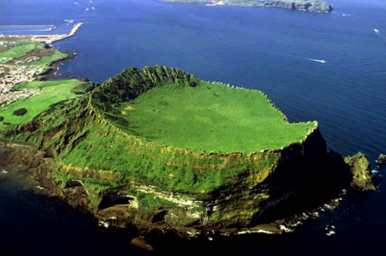Venue
Important Dates
-
November 30 2020
Full Paper Submission Due -
December 20 2020
Full Paper Review
(For the new submitted papers) -
January 15 2021
Final Full Paper Submission Due
(For the new submitted papers) -
January 31 2021
Early Bird Registration Due -
March 15 2021
Extended pre-recorded presentation submission due
TODAY 2025. 11. 06
HEAT PUMP CONFERENCE 2020
D-0
About Jeju

About Jeju
Jeju Island is the largest volcanic island in Korea and it has a mild oceanic climate throughout the year with the smallest annual temperature range in South Korea. Officially called Jeju Special Self-Governing Province, this best tourist destination boasts mild weather, as well as scenic beauties of beaches, waterfalls, cliffs and caves. The island is 73km wide and 31km long with a total area of 1,848.85km2. Jeju is the largest island in South Korea.
Mt. Halla rises in the center of Jeju to 1950m above sea level. The rest of the island slopes down from its summit and is covered with dark gray volcanic rocks and volcanic ash soil. Seongsan Ilchulbong Peak with breathtaking views is also one of the most scenic areas, and Manjanggul Cave, the world's longest lava tube has been registered as a UNESCO World Natural Heritage. Meanwhile, Jeju has recently won the Global Geopark certificate, and also has been selected as the New 7 Wonders of Nature.
-
 Baekrokdam Lakemt of Halla Mountain
Baekrokdam Lakemt of Halla Mountain
The Highest Holy Mountain in South Korea -
 Geomun Oreum Lava Tube System
Geomun Oreum Lava Tube System
Formed between 100,000 and 300,000 years ago -
 Seonsan Ilchulbong
Seonsan Ilchulbong
Oreum(secondary volcano) of the Rising Sun
Samda-Do (Island abundant with 3things)
Since Jeju is abundant in Wind, Stone and Women, it has often been called Samda-do, a nickname which has been since olden times. First and foremost since it is surrounded by water from all side,s plenty of wind is obvious. Every house has a piled up layer of stones called 'Doldam' which have holes in it that is why even fierce winds also pass by them easily. All these stones in Jeju were formed by Mt. Halla's volcanic eruptions. The reason behind a higher number of women compared to men is as the men used to go into the sea to catch fish and they often get caught in typhoons etc. and hence were not able to get back home. Jejudo natives have to deal with harsh natural environment . It is because of them that this beautiful Island still exists.
-
 Wind
Wind
Wind Power Plant Project -
 Stone
Stone
Doldam(Stone wall) -
 Seonsan Ilchulbong
Seonsan Ilchulbong
Haenyeo(woman diver)
City Map
Tourism in Korea and Jeju island
- For tourist information on Korea, check the webpage of Korea Tourism - Visit Korea.
-
For tourist information specifically on Jeju Island, check the webpages of
Jeju Tourism Office - Visit Jeju,
Jeju Tourism Organization and Jeju Tourism Association. - Interactive Tour Guide by Jeju Convention & Visitors Bureau





























